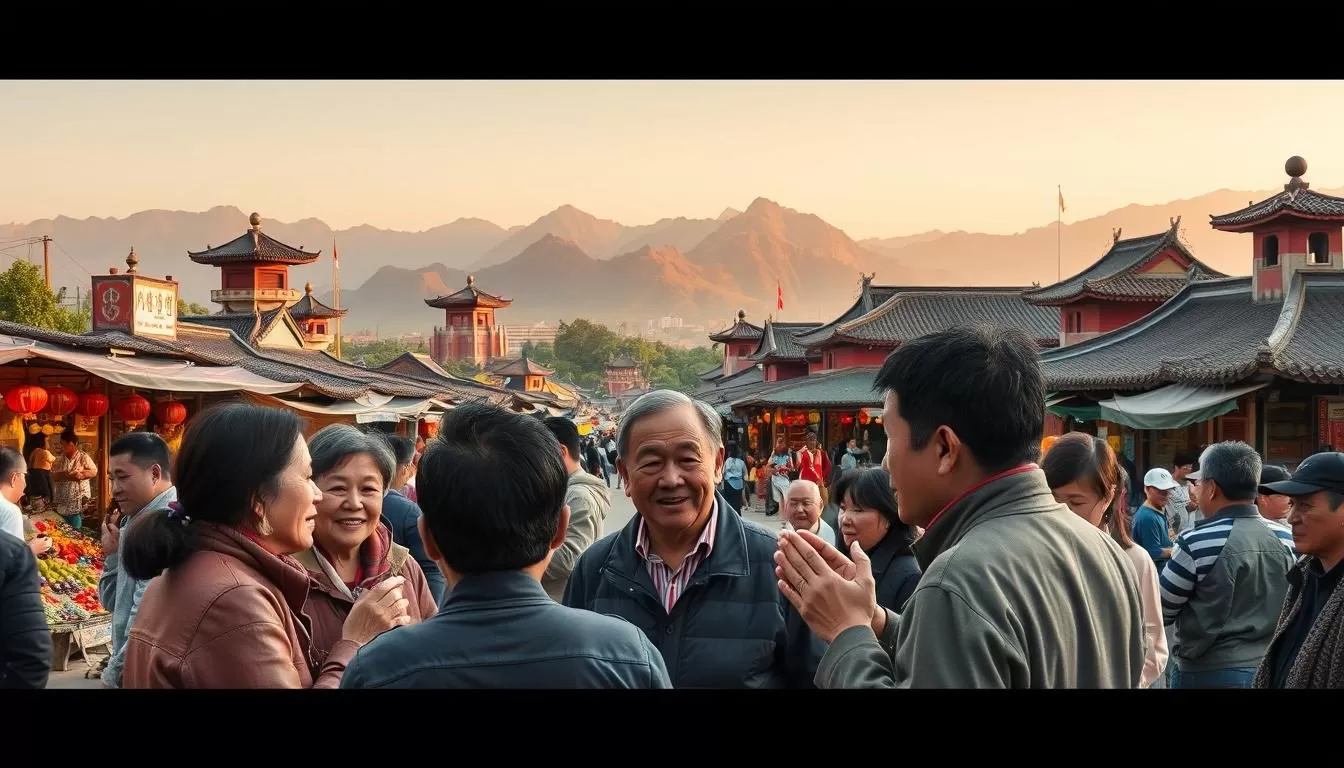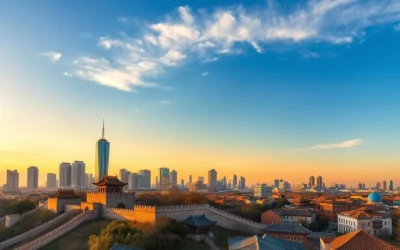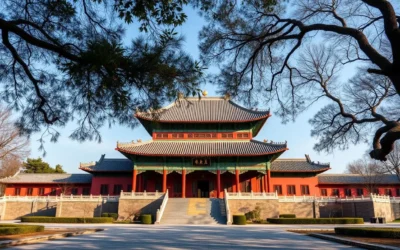✓ Accommodations✓ Flights✓ Rental Cars
When you think about the language diversity in this part of the world, Hubei stands out as a fascinating example. With a population of over 58 million, this area is a melting pot of cultures and dialects. Mandarin, the official language, is spoken by the majority, but the region also boasts a variety of other dialects and minority languages.
This linguistic richness is shaped by history and migration. Over 281 individual languages are listed across the country, reflecting the vast cultural heritage. In Hubei, you’ll find dialects like Xiang, which connects this area to neighboring regions, adding to its unique identity.
Understanding these spoken language patterns helps you appreciate the region’s cultural depth. Whether it’s the tones of Mandarin or the nuances of local dialects, each variant tells a story of its people and their history.
Overview of Language Diversity in Hubei Province and China
Exploring the linguistic landscape reveals a rich tapestry of dialects and languages. With over 300 languages and dialects spoken across the country, the diversity is staggering. Mandarin, the official language, is spoken by around 70% of the population, making it the most widely used.
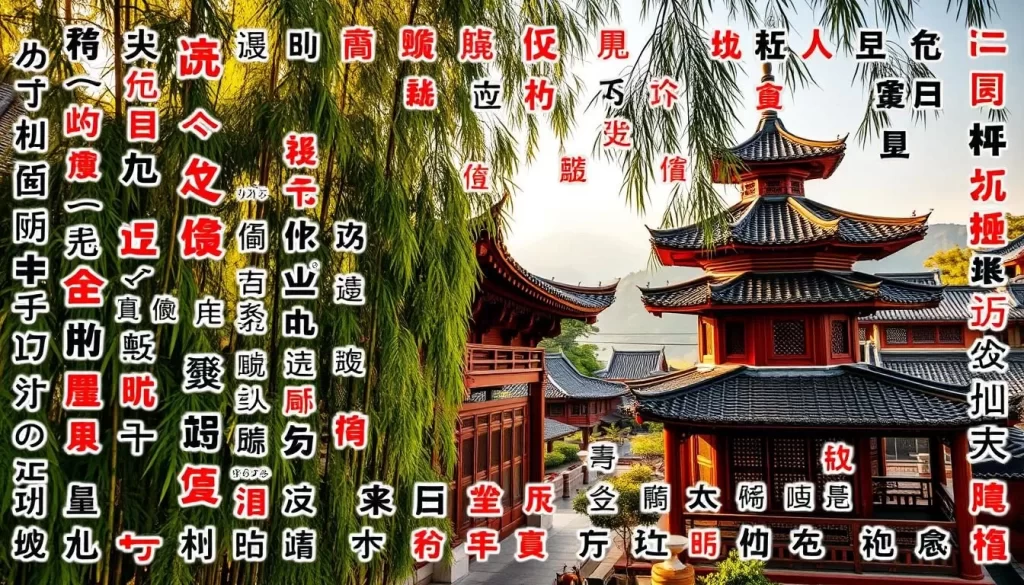
Mandarin serves as the lingua franca, bridging communication across different regions. It’s the primary medium in education, media, and governance. This dominance ensures its role as a unifying force in a country with such vast linguistic variety.
Mandarin Chinese: The Lingua Franca
Mandarin Chinese is the backbone of communication, spoken by approximately 955 million people. Its four tones and standardized writing system make it accessible yet complex. This language connects people from various ethnic groups, fostering national unity.
Minority Languages and Regional Dialects
Beyond Mandarin, regional dialects and minority languages thrive. Cantonese, Wu, and Min are just a few examples. These dialects reflect the cultural heritage of their speakers, adding depth to the linguistic mosaic.
For instance, the Xiang dialect is spoken by around 36 million people, primarily in Hunan and Hubei. Similarly, the Gan dialect has over 41 million speakers, showcasing the richness of local spoken language.
This linguistic variety not only preserves history but also strengthens cultural identity. Each dialect and minority language tells a story, contributing to the vibrant tapestry of the region.
The Role of Standard Mandarin in Hubei Province
Standard Mandarin plays a pivotal role in shaping communication and unity in this culturally rich area. It serves as the official language, bridging gaps among diverse ethnic groups and dialects. This linguistic tool is essential for fostering national cohesion.
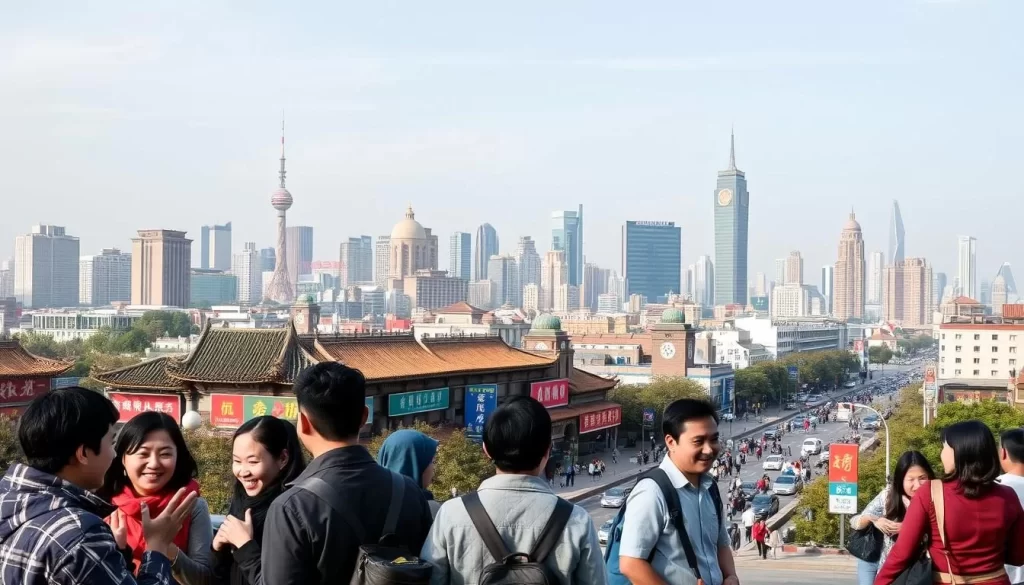
Mandarin in Education and Administration
In schools, Standard Mandarin is the cornerstone of the curriculum. It ensures that students from different regions can communicate effectively. Over 90% of the population now understands the standard language, a significant increase from the early 1950s.
Government procedures also rely heavily on Mandarin. This uniformity simplifies administration and promotes efficiency. The adoption of Mandarin as the national language in the early 20th century marked a turning point in the country’s history.
Here’s a quick look at the impact of Mandarin in education and administration:
| Aspect | Impact |
|---|---|
| Education | Mandarin is taught in schools, ensuring widespread understanding and use. |
| Administration | Government operations use Mandarin to streamline communication and processes. |
| National Unity | Mandarin bridges linguistic differences, fostering cohesion among diverse groups. |
Efforts to promote Mandarin have been successful. Today, it is the most widely spoken variant, with over 1.2 billion speakers globally. This achievement highlights the importance of language in unifying a diverse country.
Historical Perspectives on Language Policy in Hubei Province
Understanding the evolution of language policies offers a window into the cultural and historical shifts in this region. Over time, the language landscape has been shaped by migration, dynastic changes, and modern reforms. These influences have created a unique linguistic identity that continues to evolve.
Early Language Developments and Regional Variants
In the late Qing Dynasty, foreign language education began to take root. Between 1860 and 1894, 24 schools were established, with 7 focusing on foreign languages. The Hubei Ziqiang School, founded in 1890, was a pioneer in this effort, lasting for 22 years and attracting students from various regions.
This period also saw the rise of regional dialects like Xiang, which became prominent due to migration patterns. These dialects reflect the cultural heritage of their speakers, adding depth to the linguistic mosaic.
Modern Policy Shifts and Their Impacts
In the 20th century, language policies shifted to promote Standard Mandarin. By 2015, 70% of the population spoke Putonghua, with a target of 80% by 2020. This push aimed to unify communication across diverse ethnic groups.
However, this focus on Mandarin has impacted minority languages. While the constitution guarantees the freedom to use native languages, only one language is officially recognized for each of the 56 nationalities. This tension between standardization and preservation continues to shape the linguistic landscape today.
Cultural Significance of Widely Spoken Languages
Language is more than just a means of communication; it’s a bridge to cultural heritage and identity. In this region, local dialects and expressions carry the essence of traditions, passed down through generations. These linguistic elements are deeply intertwined with festivals, regional operas, and folk storytelling, making them vital to the cultural fabric.

For example, regional operas often use local dialects to convey emotions and stories unique to the area. This practice not only entertains but also preserves the history and values of the community. Similarly, folk tales told in native languages connect people to their roots, fostering a sense of belonging.
Local Traditions and Expressions
Local traditions thrive through the use of regional language. Festivals, for instance, often feature songs and chants in native dialects, celebrating the ethnic group’s heritage. These events strengthen community bonds and ensure that cultural practices remain alive.
However, modern challenges threaten the survival of these dialects. As Mandarin becomes more dominant, younger generations may lose touch with their linguistic roots. Efforts by the government and local communities aim to preserve these languages, but the balance between progress and tradition remains delicate.
Despite these challenges, the resilience of regional dialects is evident. They continue to play a crucial role in shaping the identity of the population, ensuring that cultural diversity remains a cornerstone of the region’s legacy.
Comparative Linguistic Analysis: Hubei versus Other Chinese Provinces
The linguistic diversity across Chinese regions offers a fascinating study in contrasts. Each area has unique phonetic features, vocabulary, and syntax that reflect its cultural and historical background. Understanding these differences helps you appreciate the richness of the language landscape.
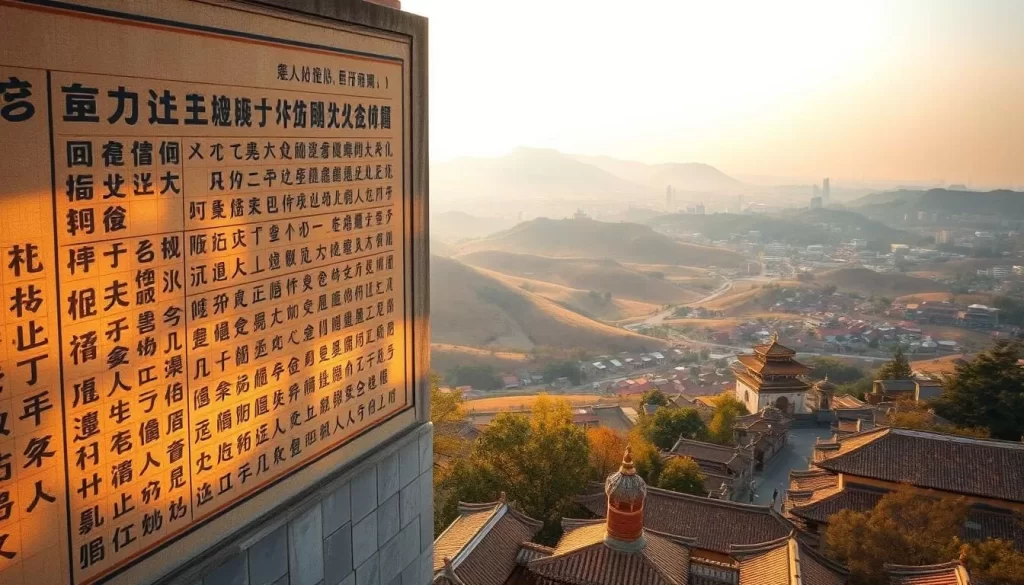
Linguistic Similarities and Differences
Dialects in Hubei share some similarities with neighboring regions, such as the use of tones and certain vocabulary. However, there are notable differences in pronunciation and syntax. For example, the Xiang dialect, spoken in Hubei, has distinct phonetic features compared to the Gan dialect in Jiangxi.
Mutual intelligibility can be challenging between dialects. A speaker of Mandarin might struggle to understand the Xiang dialect due to its unique tonal patterns and vocabulary. This highlights the complexity of the Chinese language family.
Influences from Historical Migrations
Historical migrations have played a significant role in shaping regional dialects. The movement of people from the north to the southeast has influenced the development of dialects in Hubei and other areas. For instance, the Jin dialects, traditionally part of Mandarin, were classified separately due to their distinct features.
Major rivers and mountain ranges have also impacted dialect formation. The Yangtze River, for example, has acted as a natural boundary, creating distinct linguistic zones. This geographical influence is evident in the variety of dialects spoken across the region.
| Feature | Hubei | Other Provinces |
|---|---|---|
| Phonetic Patterns | Unique tones in Xiang | Distinct tones in Gan |
| Vocabulary | Local expressions | Regional terms |
| Syntax | Varied sentence structure | Different word order |
For more insights into the dialect diversity across China, explore this detailed study.
To learn about the varieties of Chinese dialects, visit this comprehensive resource.
Hubei Province, China: Official and widely spoken languages
The way people communicate in this region tells a story of cultural pride and personal identity. For many, the language they speak is more than just words—it’s a connection to their heritage and community. Whether it’s Mandarin or a local dialect, each variety carries a unique character that shapes how individuals see themselves and their place in the world.
Take the Xiang dialect, for example. Spoken by over 38 million people, it’s a symbol of regional pride for many residents. This language isn’t just a way to communicate; it’s a marker of belonging and a link to generations past.
Despite the dominance of Mandarin, many still prefer their native dialects in daily life. This preference highlights the deep emotional ties people have to their linguistic roots. For some, switching to Mandarin feels like losing a part of their identity.
Language Preferences and Community Bonds
In local markets, schools, and family gatherings, you’ll often hear a mix of Mandarin and regional dialects. This blend reflects the balance between modernization and tradition. While Mandarin unites people across different groups, local dialects strengthen community bonds.
For instance, in rural areas, the Gan dialect is still widely used. It’s not just a language—it’s a way to preserve local customs and values. This linguistic diversity ensures that cultural traditions remain alive, even as the world changes.
The Role of Language in Shaping Identity
Your choice of language can say a lot about who you are. For many, speaking a local dialect is a way to show pride in their roots. It’s a way to stand out in a world that often pushes for uniformity.
At the same time, Mandarin plays a crucial role in connecting people from different backgrounds. It’s a bridge that allows diverse groups to communicate and collaborate. This interplay between the official language and local dialects creates a rich tapestry of identities.
To learn more about the varieties of Chinese language, explore this detailed resource.
Government Language Policies and Their Impact
Government policies on language have shaped communication and cultural identity in significant ways. These efforts aim to unify the population while preserving local traditions. However, balancing national unity with minority rights remains a challenge.
Education, Minority Rights, and Cultural Preservation
Educational reforms have prioritized Standard Mandarin, making it the primary language of instruction. This shift has improved national cohesion but raised concerns about minority dialects. For example, the 1995 Law on Education reduced the role of minority languages in schools.
Despite constitutional protections, minority groups face challenges in preserving their linguistic heritage. Issues like a lack of qualified teachers and societal disinterest threaten the survival of these dialects.
Efforts to address these issues include school-based immersion programs. These initiatives have shown promise in fostering bilingual fluency, ensuring that minority languages remain part of the cultural fabric.
| Policy | Impact |
|---|---|
| Mandarin in Education | Improved national unity but marginalized minority languages. |
| Minority Language Rights | Constitutional protections exist, but implementation is inconsistent. |
| Immersion Programs | Promote bilingual fluency and cultural preservation. |
Understanding public attitudes toward dialects is also crucial. Research shows that dialects play a vital role in fostering social integration, despite some stigmatization.
Conclusion
The linguistic landscape of this region is a vibrant mix of tradition and modernity. With over 302 languages spoken, it reflects a rich cultural heritage. Standard Mandarin serves as a unifying force, while regional dialects like Xiang and Gan add depth to the local identity.
Historical shifts in language policies have shaped communication and education. Today, Mandarin dominates, but efforts to preserve minority dialects continue. These varieties are more than just words—they are a connection to heritage and community.
As you explore this region, you’ll notice how language shapes identity. Each speaker carries a piece of history in their words. This dynamic interplay between tradition and progress highlights the importance of preserving linguistic diversity.
For a deeper dive into the character of these dialects, check out this detailed resource. Understanding these languages offers a window into the soul of the region.
The above is subject to change.
Check back often to TRAVEL.COM for the latest travel tips and deals.
